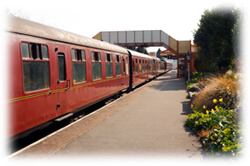Pressure Washing Railcars – Your New Training Program
Before you put a bid in for your first rail job, you should do some homework regarding company-specific or industry regulations. Find out what areas you will or won’t be expected to wash, and what kind of solvents you can or can’t use. The timelines for these jobs can be very tight, as the trains will need to be back on the tracks within a few days. It is a standard practice to clean a one-unit train in three days: and that train can have up to 125 railcars. A well-trained crew and enough equipment will be important under these circumstances.
Also, make sure you see the jobsite and find out who owns it, if there is a fresh water source, and a place to dispose of the wastewater. Making sure you can bring your pressure washer equipment into and out of the site is important, particularly if you are entering into a rainy or cold season. You should also find out about any environmental constraints which may apply to that site before you begin pressure washing railcars on it.

Preparing the jobsite usually will require you to bring in water and establish a wastewater recovery system. You will need to have ready access to a lift truck so you can access the top of the railcars, and of course you should have all the usual protective gear on site and on your crew before the washing begins.
Washing the railcars is actually a simple process, consisting of the following steps:
- Chemical wash and rinse the roof.
- Chemical wash and rinse the sides and undercarriage.
- Graffiti removal like sandblaster equipment may be necessary on some cars, and may require manual scrubbing.
- Apply a pressure washer cleaning solution degreaser, if necessary.
- Rinse the entire unit top to bottom, including the undercarriage and wheels.
Locomotives, it must be mentioned, require special care. Locomotive brakes must be covered with waterproof tarps before the power washing begins. This will keep the disk brakes from corroding and ultimately failing.
Most people, upon opening a pressure washing business, don’t think of railroads as a potential business opportunity. In a changing economy, though, the money will be made by those who make their own opportunities. Pressure washing railcars could be a great way to keep your business on track in years to come.
The publisher of these pages is in no way responsible for any damage caused to you, your pressure washer, anyone else, your property, or anyone else's property by trying to implement or by successfully implementing the above-mentioned performance and services.


